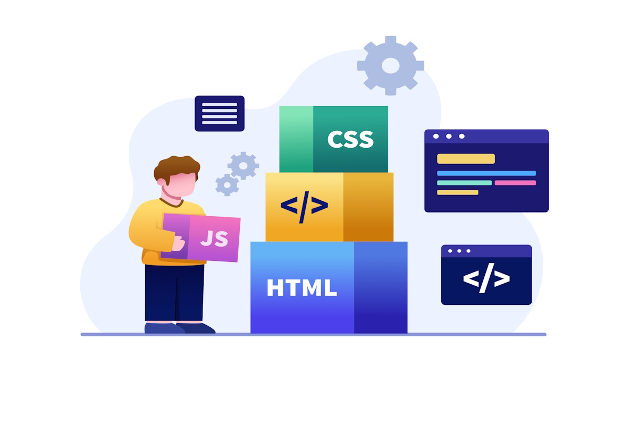Contents
- 1 Understanding the Current Landscape
- 1.1 Emerging Technologies in Mobile Development
- 1.2 The Role of Artificial Intelligence
- 1.3 Shifting to Cross-Platform Development
- 1.4 The Growing Importance of Security
- 1.5 User Experience: The Heart of Every Application
- 1.6 Outsourcing Trends in Mobile Development
- 1.7 Future-Proofing Mobile Development Strategies
- 1.8 Navigating the Future with Confidence
- 1.9 FAQs
Understanding the Current Landscape
The mobile software landscape is rapidly evolving. Businesses are increasingly aware of the vital role mobile applications play in reaching customers and driving engagement. In 2023, mobile app usage is expected to surpass 4 billion users, emphasizing the need for innovative approaches in mobile app development company practices. Companies are adapting to changing consumer demands, technological advancements, and market dynamics.
An effective mobile development strategy encompasses several elements: a clear understanding of user experience (UX), the selection of appropriate technologies, and an agile development process.As we look ahead, it’s essential to explore how these components will interact in the foreseeable future and identify the emerging trends that will define mobile software development.

In this dynamic environment, organizations are required to remain adaptable. Integrating cutting-edge technologies, such as AI and machine learning, is becoming a necessity, not an option. As businesses pursue effective deployment and management of mobile applications, they need to continuously evaluate their approaches through metrics and user feedback.
Emerging Technologies in Mobile Development
Technology is at the forefront of mobile software development. Some emerging technologies significantly impact how developers approach app creation. These include augmented reality (AR), virtual reality (VR), and progressive web apps (PWAs). Each offers unique functionalities and opportunities for developers.
AR and VR reshape user interaction with mobile applications, providing immersive experiences. Developers harness these technologies in applications ranging from gaming to retail, enhancing user engagement and satisfaction. Adapting to these trends will require developers to acquire new skills and be open to exploring fresh design frameworks.
On the other hand, PWAs bridge the gap between web and mobile applications. PWAs provide users with a seamless experience across devices while facilitating easier updates and lower development costs. They are an effective solution for businesses looking to maximize their reach without investing heavily in native app development.
The Role of Artificial Intelligence
Artificial Intelligence (AI) is becoming a cornerstone of mobile app development. AI-driven solutions enhance user experience through personalized interactions and improved resource allocation. The influence of AI will continue to grow, affecting various areas including data analysis, user behaviors, and predictive capabilities.
One significant development is the implementation of chatbots. These AI-driven features provide instant communication channels, improving customer service. As businesses aim to streamline their operations, integrating AI into mobile applications will become essential. The evolution of ai mobile app development promises exciting possibilities for businesses.
Moreover, AI can facilitate smarter app analytics, providing insights to guide design and development decisions. By leveraging AI’s capabilities, businesses can analyze user data and predict trends, ultimately enhancing their product offerings and improving overall user satisfaction.
Shifting to Cross-Platform Development
Cross-platform development tools are gaining traction, allowing developers to write code once and deploy it across multiple platforms. This approach saves time and resources while ensuring consistency in user experience. As development costs rise, businesses seek more efficient methods to deliver applications on various operating systems.
Popular frameworks, such as Flutter and React Native, facilitate this transition. In using these tools, developers can leverage web technologies while maintaining native-like performance. The result is increased efficiency and reduced time to market, which is critical in a competitive landscape.
As demand for mobile applications escalates, cross-platform development will likely dominate. This shift allows for faster iterations and responses to user needs while reducing the need for platform-specific expertise.
The Growing Importance of Security
Security concerns are paramount as mobile applicationshandle sensitive user data. With data breaches on the rise, ensuring robust security measures in mobile app development is essential. Developers must prioritize security features, encryption methods, and thorough testing to protect users.
Businesses must adopt a security-first approach, integrating security protocols from the outset of the development process. Regular security audits and updates are crucial to mitigate potential threats and ensure compliance with evolving regulations.
Awareness of security best practices is essential for development teams. Comprehensive training can help teams recognize vulnerabilities and implement suitable solutions to safeguard user data and maintain trust.
User Experience: The Heart of Every Application
User experience is the foundation of successful mobile applications. A well-designed app engages users and drives retention. Understanding user needs and preferences is vital in the design and development phase. Incorporating feedback during development cycles can significantly enhance user satisfaction.
Simplified navigation, fast loading times, and visually appealing designs contribute to positive user experiences. Additionally, optimizing applications for various screen sizes and functionalities is crucial for accessibility.
Promotion of inclusivity should also be considered. Developers must create applications that cater to diverse user groups, ensuring features are usable by individuals with varying abilities and preferences. This focus on user-centric design will drive innovation in mobile software development.
Outsourcing Trends in Mobile Development
Outsourcing has become a significant trend in mobile app development, enabling companies to access specialized skills without the burden of hiring full-time staff. This flexibility allows organizations to scale their development teams according to project needs and timelines. Factors influencing mobile app development outsourcing decisions include cost, access to talent, and time zone differences.
Outsourcing to countries with lower labor costs can enhance profitability while ensuring access to qualified developers who can bring innovative solutions to projects. However, organizations need to consider cultural and communication factors that may impact project success.
Effective collaboration tools and platforms can help mitigate these challenges. Regular communication, transparent processes, and established expectations will ensure fruitful partnerships and lead to better project outcomes.
Future-Proofing Mobile Development Strategies
Future-proofing mobile development strategies is essential for success in an ever-changing environment. Businesses must stay abreast of technological advancements and market trends while remaining adaptable. Continuous skill development and team training will ensure developers are equipped to navigate new challenges.
Integrating feedback loops into the development process is also critical. Regular end-user feedback can help identify areas for improvement and drive innovation. Fostering a culture of openness and collaboration will empower teams to create exceptional applications that meet user needs effectively.
Ultimately, investing in thorough market research and continuous evaluation can provide companies with insights required for developing engaging and relevant applications. Businesses that prioritize long-term strategies and innovation will thrive in the mobile app space.
In navigating the future of mobile software development, companies have multiple paths to explore. Embracing emerging technologies and prioritizing user experience will be the driving forces behind successful applications. Staying aware of market trends and continuously adapting approaches will set businesses apart in a competitive landscape.
Implementing security measures throughout the development process and prioritizing accessibility for all users will further enhance application quality. As outsourcing trends continue to rise, organizations will need to foster effective communication and collaboration with external teams.
By formulating comprehensive strategies, prioritizing innovation, and remaining open to change, businesses can confidently approach the future of mobile software development. Success lies in the ability to anticipate changes and adapt accordingly, ultimately leading to strengthened customer relationships and a sustainable competitive edge.
FAQs
- What trends are shaping mobile app development for the future?
The future of mobile app development is shaped by trends such as the rise of artificial intelligence, augmented and virtual reality, and cross-platform development solutions. Understanding these trends enables businesses to innovate effectively. - How important is user experience in mobile app development?
User experience is crucial in mobile app development. A seamless user interface, fast load times, and accessibility contribute directly to user satisfaction and retention rates. - What role does security play in mobile app development?
Security is paramount as mobile applications handle sensitive user data. Integrating strong security measures helps protect user information and maintain trust in the application.
The future of mobile app development is shaped by trends such as the rise of artificial intelligence, augmented and virtual reality, and cross-platform development solutions. Understanding these trends enables businesses to innovate effectively.
User experience is crucial in mobile app development. A seamless user interface, fast load times, and accessibility contribute directly to user satisfaction and retention rates. Security is paramount as mobile applications handle sensitive user data. Integrating strong security measures helps protect user information and maintain trust in the application.




